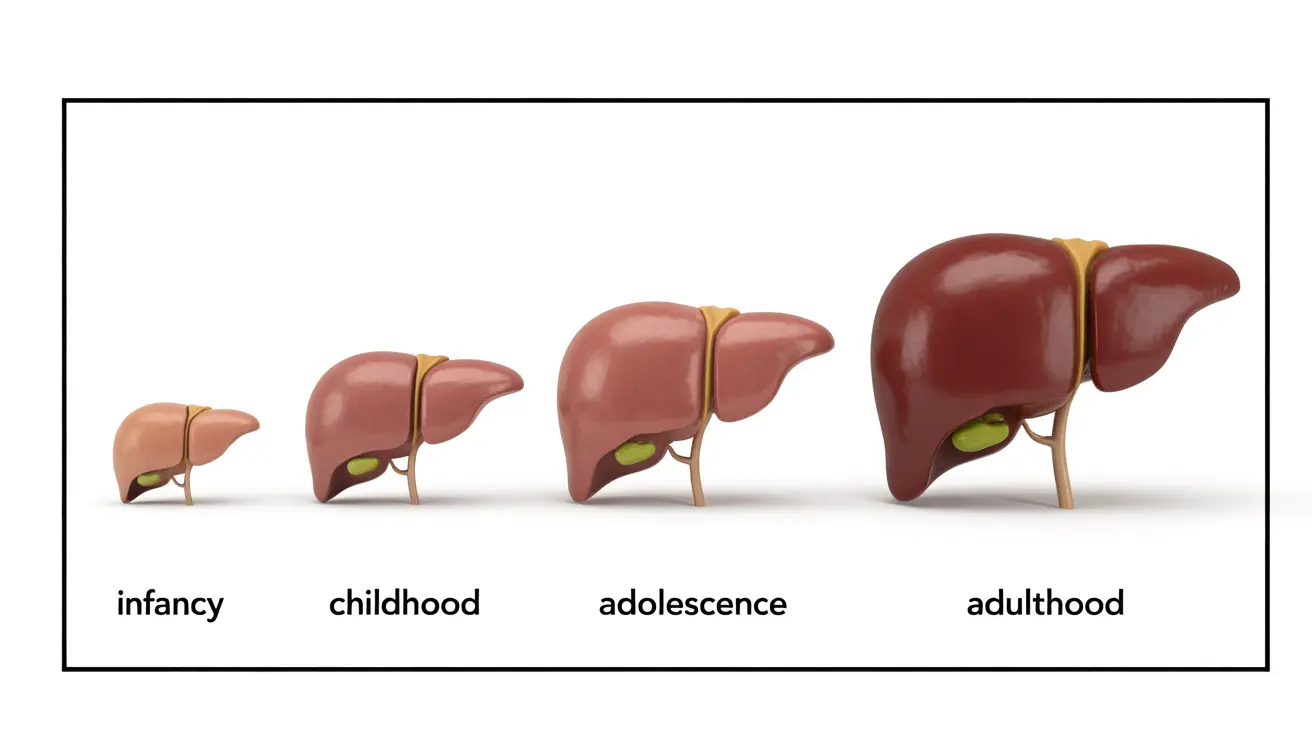The liver, our body's largest internal organ, naturally varies in size throughout our lifetime. Understanding normal liver measurements is crucial for healthcare providers to assess liver health and detect potential abnormalities early. This comprehensive guide explores how liver size changes with age and what factors influence these variations.
Whether you're a healthcare professional or simply interested in understanding more about liver health, knowing the standard measurements for different age groups can help put this vital organ's dimensions into perspective.
Normal Liver Size Measurements by Age
Liver size follows a predictable pattern of growth and change throughout human development. Here's a detailed breakdown of typical liver measurements by age group:
Infants and Young Children (0-5 years)
In newborns, the liver typically measures between 5-6.5 cm in the midclavicular line. By age one, this measurement increases to approximately 6.5-7.5 cm. During early childhood, the liver continues to grow proportionally with the child's body.
School-Age Children (6-12 years)
School-age children typically show liver measurements of 7-9 cm in the midclavicular line. The liver size gradually increases as children grow, maintaining proportion with their overall body size.
Adolescents and Adults
In adults, the average liver span ranges from 10-12 cm in the midclavicular line. Women typically have slightly smaller measurements than men, with normal ranges being:
- Women: 10-11 cm
- Men: 10.5-12 cm
Factors Affecting Liver Size
Physical Characteristics
Several physical factors can influence normal liver size:
- Body mass index (BMI)
- Height and weight
- Body frame size
- Overall body composition
Health and Lifestyle Factors
Various health-related elements can impact liver dimensions:
- Dietary habits
- Exercise levels
- Alcohol consumption
- Underlying medical conditions
Professional Measurement Methods
Healthcare providers use several techniques to accurately measure liver size:
Physical Examination
Doctors perform percussion and palpation along the midclavicular line to assess liver span. This traditional method provides a basic assessment but requires expertise for accuracy.
Imaging Technologies
Modern medical imaging offers precise measurement options:
- Ultrasound: Most commonly used, non-invasive method
- CT scan: Provides detailed 3D measurements
- MRI: Offers comprehensive liver assessment
Warning Signs of Abnormal Liver Size
Several indicators may suggest abnormal liver dimensions:
- Visible abdominal swelling
- Right-sided abdominal pain
- Feeling of fullness under the right rib cage
- Unexplained weight changes
Frequently Asked Questions
What is the normal liver size in centimeters for different age groups?
Normal liver size varies by age: newborns (5-6.5 cm), young children (6.5-7.5 cm), school-age children (7-9 cm), and adults (10-12 cm) in the midclavicular line.
How does liver size typically change from infancy through older adulthood?
The liver grows progressively from infancy through adolescence, reaching adult size by late teens. After that, it maintains relatively stable dimensions unless affected by health conditions.
What factors influence variations in normal liver size besides age?
Body size, gender, BMI, dietary habits, exercise levels, and overall health status can all influence liver size. Genetic factors and certain medical conditions may also play a role.
How is liver size accurately measured and can it be checked at home?
Professional measurement requires medical expertise using physical examination techniques or imaging studies. While self-examination isn't reliable for precise measurements, any noticeable changes should be reported to a healthcare provider.
When should I be concerned about an abnormal liver size and seek medical advice?
Seek medical attention if you experience persistent abdominal swelling, right-sided pain, difficulty breathing, or unexplained weight changes. These symptoms may indicate changes in liver size requiring professional evaluation.




